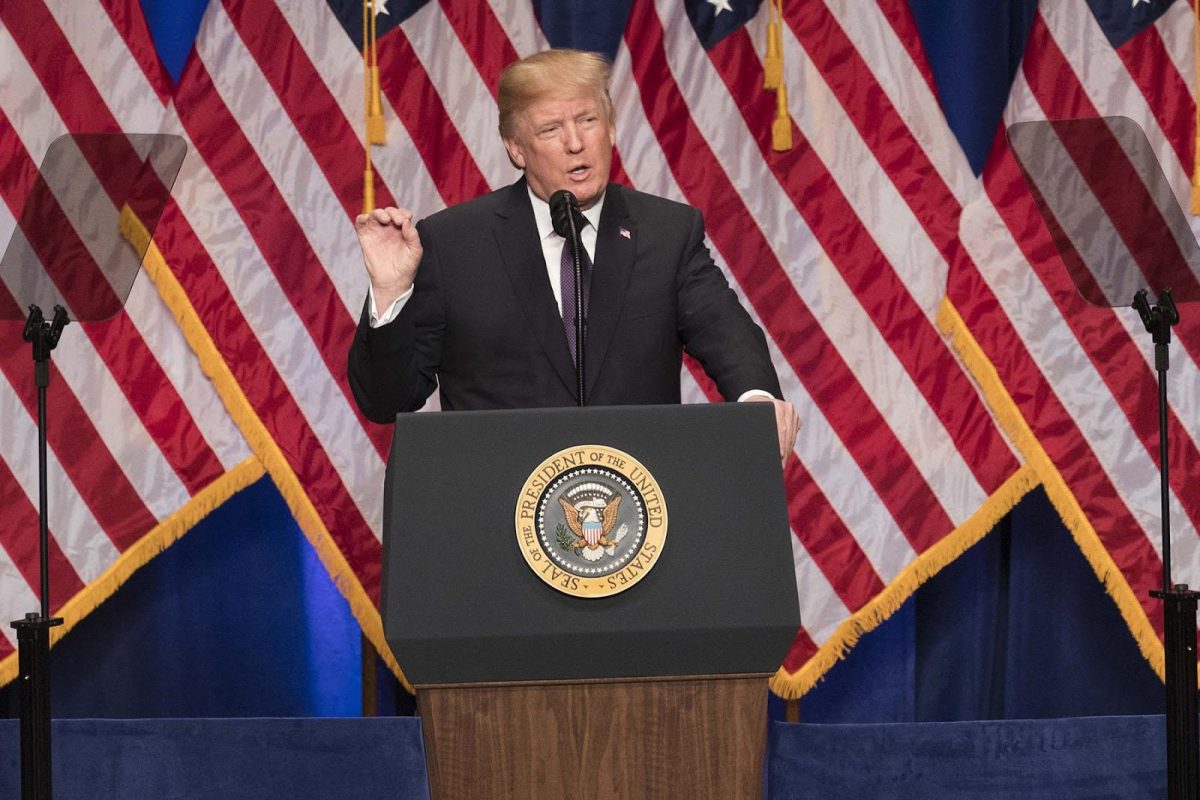
President Donald Trump addressing the nation.
Since the day of his return to office, President Donald Trump has already signed almost 104 executive actions (with more to come), evolving the way the country works. Most of these orders have been tailored to undoing everything the Biden campaign has accomplished in the last four years. President Trump has addressed concerns like immigration, economy, the federal government, foreign policy, national security, climate, and the educational system.
One of the most well-known changes that Trump has implemented is his policies on immigration. According to ProPublica, Trump has already “paused the resettlement of tens of thousands of refugees who’d already been vetted and approved to relocate to the United States, including as many as 15,000 Afghans.” Along with this, he has ended humanitarian parole for immigrants from Cuba, Haiti, Venezuela and Nicaragua. Humanitarian parole grants foreigners admission to temporarily enter the United States due to an emergency. President Trump has already made good on his promise to remove all unauthorized immigrants, beginning with those accused of crimes. However, “less than half of the approximately 8,200 people arrested from Jan. 20 through Feb. 2 so far have criminal convictions.” This is following government data acquired by The Texas Tribune and ProPublica.
Another aspect of Trump’s executive orders focuses on the nation’s security. Back in 2002, when the U.S. had withdrawn from the Anti-Ballistic Missile Treaty, the national missile defence policy only applied for rogue nation threats or accidental launches. According to The White House, the “threat from next-generation strategic weapons has become more intense and complex.” The ‘Iron Dome for America’ is an act that states that the United States will issue a common defence for the citizens by, “deploying and maintaining a next-generation missile defence shield.” This is to provide the US with defence from “any foreign aerial attack on the Homeland.”
Not only is President Trump’s orders focusing on the management of the nation in general, but he is also making changes to the way the executive branch in the government is run. He has mandated that all the heads of departments and agencies terminate remote work as soon as possible and is requiring full work hours. The President has also announced the appointments of the White House Office of Faith. This office has been created to, “empower faith-based entities, community organizations, and houses of worship to serve families and communities.” This office is being led by Pastor Paula White-Cain, a speaker who has a global influence in “almost 200 countries, ministering, fighting for religious freedom and humanitarian rights, and advocating for the voiceless,” according to The White House.
Aside from expanding the executive branch, President Trump has declared a national energy emergency as part of his orders about climate and energy. According to The White House, this means that the US’s production of, “energy and critical minerals (“energy”) identification, leasing, development, production, transportation, refining, and generation capacity of the United States are all far too inadequate to meet our Nation’s needs.” The energy deficit is making the US vulnerable and thus its defence and security needs have been jeopardized.
After only a month back in office, President Trump has already furthered the nation by expanding the executive branch and focusing on national security-and he isn’t stopping there. He promises to keep it up for the duration of his term. For those living in the United States, this means changes to their day-to-day life.
Sources:
Tracking Trump’s executive orders and actions | CNN Politics
Donald Trump’s Immigration Executive Orders: Tracking the Most Impactful Changes — ProPublica
The Iron Dome for America – The White House
Return to In-Person Work – The White House
Federal Register